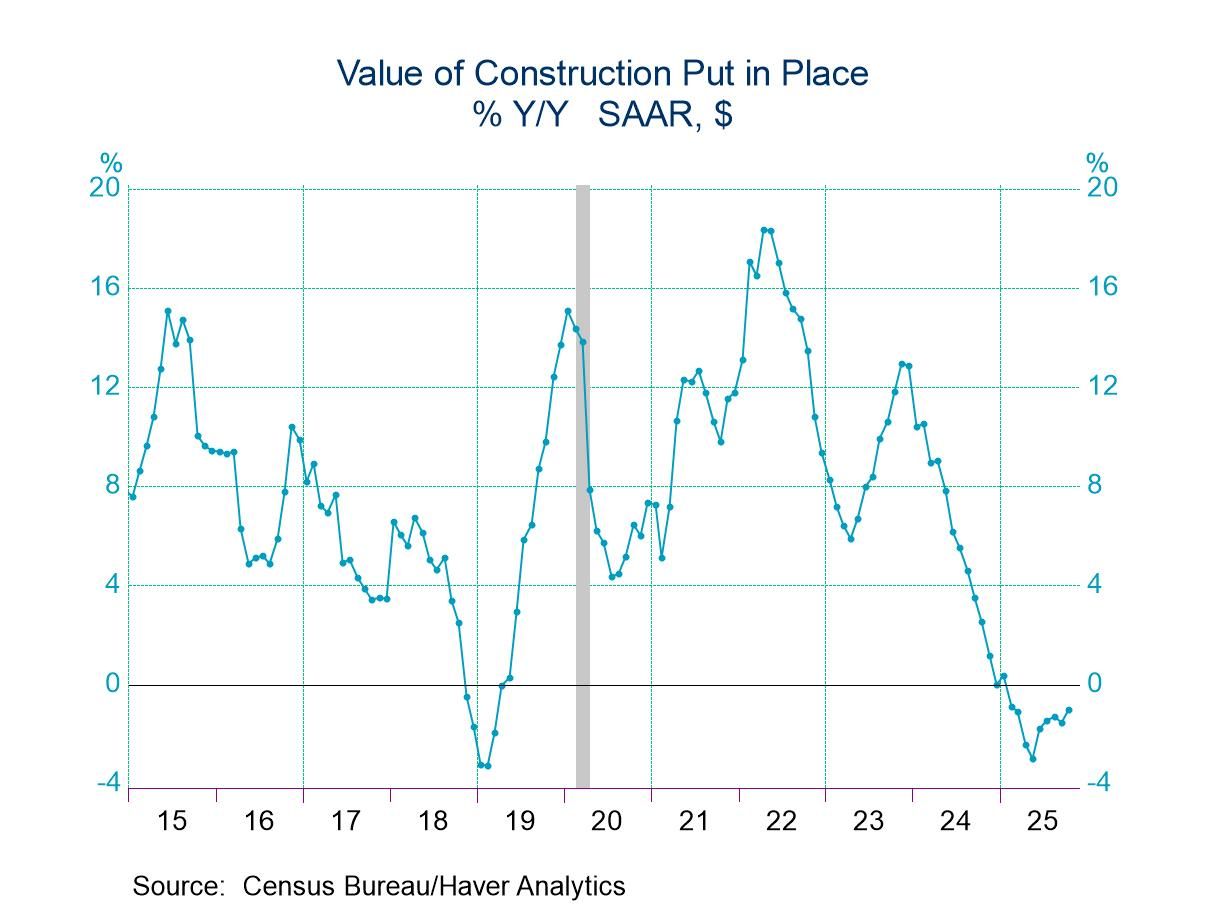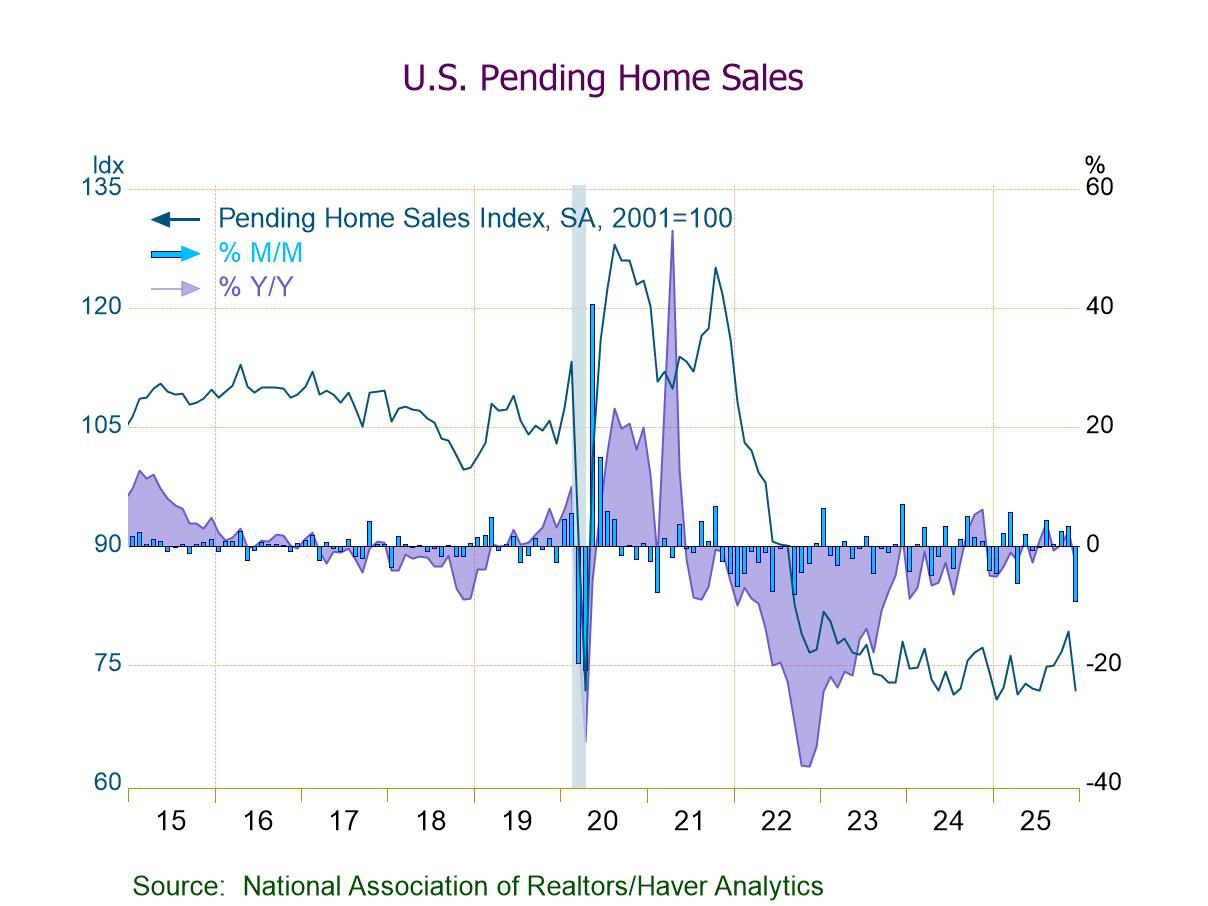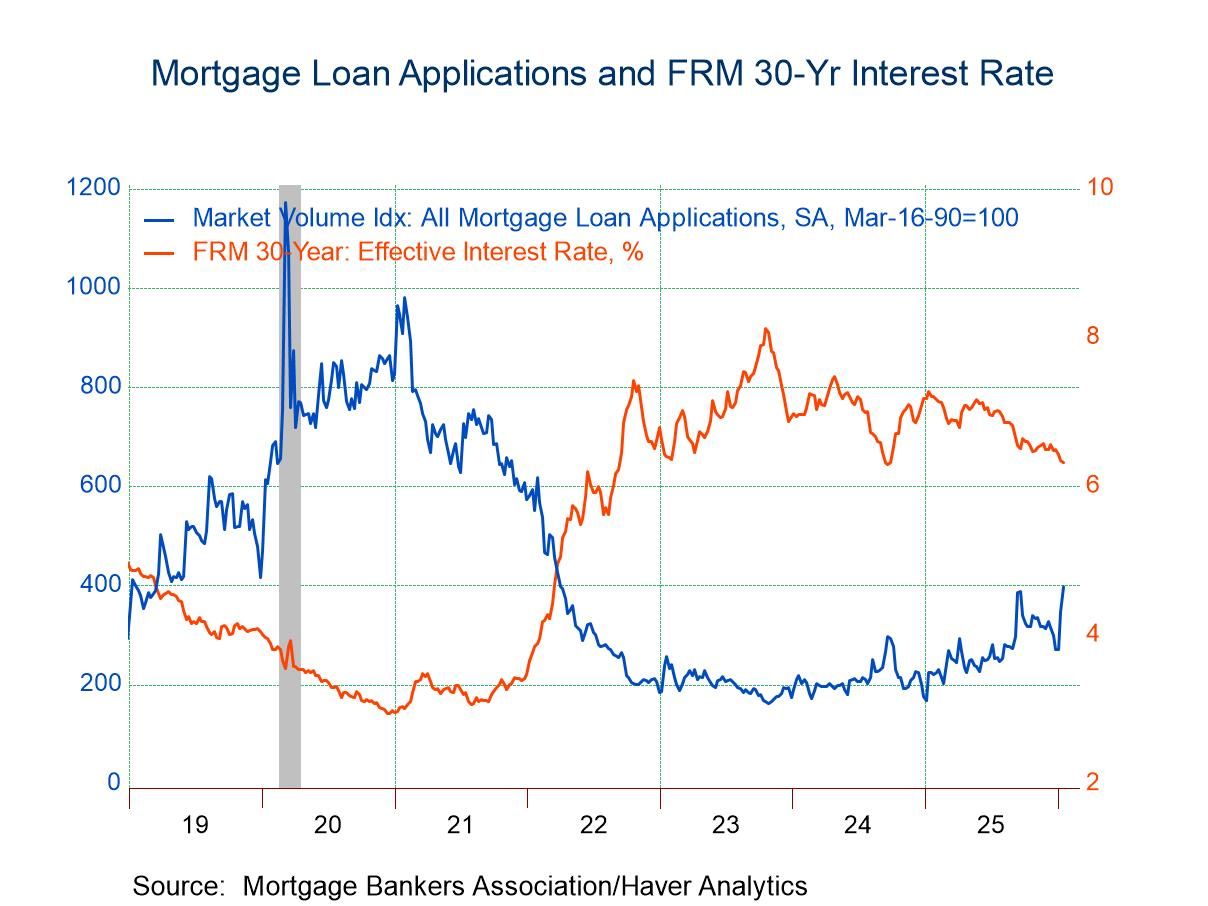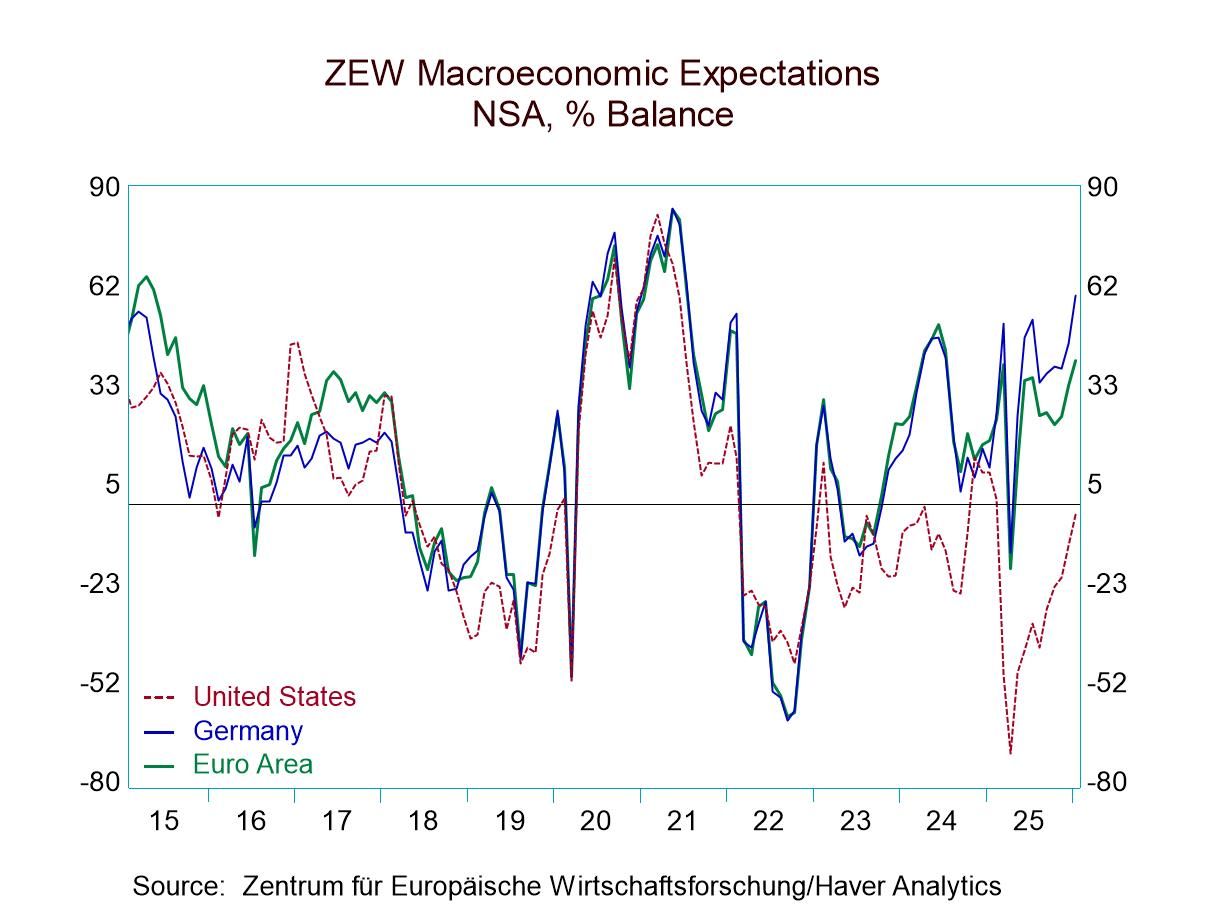 Global| Dec 22 2006
Global| Dec 22 2006U.S. Durable Goods Orders Rebounded, But ...
by:Tom Moeller
|in:Economy in Brief
Summary
New orders for durable goods rose 1.9% last month, a gain after the offsetting volatility of the prior two months when orders fell 8.2% in October after an 8.7% September spike. Consensus expectations had been for a 1.5% rise n total [...]

New orders for durable goods rose 1.9% last month, a gain after the offsetting volatility of the prior two months when orders fell 8.2% in October after an 8.7% September spike. Consensus expectations had been for a 1.5% rise n total orders during November.
During the last ten years there has been a 69% correlation between the y/y change in durable goods orders and the change in output of durable goods..
A 14.4% rise in total aircraft & parts orders last month, however, still added volatility. In addition, orders for motor vehicles & parts rose 0.2% (-3.9% y/y). Less transportation altogether, slipped 1.1%.
And broad based order declines in other industries continued to raise questions about the health of the factory sector. Orders for nondefense capital goods less aircraft fell 1.4% reflecting a 1.5% (+5.2% y/y) slide in electrical equipment orders and an 8.9% (+3.8% y/y) drop in machinery. During the last ten years there has been an 86% correlation between the y/y change in capital goods orders less aircraft and the y/y change in business fixed investment in equipment & software from the GDP accounts.
Primary metals orders fell 1.9% (+4.1% y/y), down for the third month in the last four. To the upside were orders for computer s & electronic products which rose 7.5% (10.4% y/y).
Shipments of durable goods increased another slight 0.1% (2.7% y/y) after the downwardly revised 0.3% October uptick. Less the transportation sector shipments fell 0.1% (+4.6% y/y) for the second decline in the last three months. During the last ten years there has been an 82% correlation between the y/y change in durable goods shipments and the change in industrial production of durable goods.
Durable inventories rose just 0.3% (7.8% y/y), the weakest monthly increase since a decline in February. Less the transportation sector inventories also increased a modest 0.2% (8.4% y/y) and the inventory to shipments ratio outside of transportation rose to the highest level since July of last year.
| NAICS Classification | November | October | Y/Y | 2005 | 2004 | 2003 |
|---|---|---|---|---|---|---|
| Durable Goods Orders | 1.9% | -8.2% | -0.0% | 9.0% | 6.4% | -0.6% |
| Excluding Transportation | -1.1% | -1.6% | 3.4% | 9.4% | 7.6% | -1.7% |
| Nondefense Capital Goods | -0.2% | -14.8% | -8.4% | 21.4% | 5.6% | -3.4% |
| Excluding Aircraft | -1.4% | -3.9% | 6.2% | 12.3% | 2.8% | -2.0% |
Tom Moeller
AuthorMore in Author Profile »Prior to joining Haver Analytics in 2000, Mr. Moeller worked as the Economist at Chancellor Capital Management from 1985 to 1999. There, he developed comprehensive economic forecasts and interpreted economic data for equity and fixed income portfolio managers. Also at Chancellor, Mr. Moeller worked as an equity analyst and was responsible for researching and rating companies in the economically sensitive automobile and housing industries for investment in Chancellor’s equity portfolio. Prior to joining Chancellor, Mr. Moeller was an Economist at Citibank from 1979 to 1984. He also analyzed pricing behavior in the metals industry for the Council on Wage and Price Stability in Washington, D.C. In 1999, Mr. Moeller received the award for most accurate forecast from the Forecasters' Club of New York. From 1990 to 1992 he was President of the New York Association for Business Economists. Mr. Moeller earned an M.B.A. in Finance from Fordham University, where he graduated in 1987. He holds a Bachelor of Arts in Economics from George Washington University.






